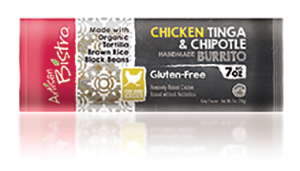With “fresh” and “healthy” emerging as food industry buzz words, it’s easy to wonder if frozen foods—which almost inherently fail conjure connotations associated with either fresh or healthy products—still appeal to the majority of American consumers.

|
|
Consumers warms to new, healthier options.
Consumers warm to new, healthier options.
|
However, According to “Frozen Foods in the U.S.: Hot Meals, Sides, and Snacks,” a new report by market research publisher Packaged Facts, consumers are slowly warming up again to frozen foods. Packaged Facts cites the products’ well-known convenience as well as recent introductions of more natural and organic frozen offerings that lend the segment a much needed health halo.
Consumer concerns about preservatives and other ingredients are alleviated by the notion that if the products are natural or organic, they must be fresher or, at least, healthier.
“Frozen foods of all kinds have been challenged in recent years as a result of the convergence of several trends, especially, but not exclusively, a growing demand for fresh products or, at least, fresher products in refrigerated rather than frozen form. Nevertheless, frozen food products still have much to offer,” says David Sprinkle, Packaged Facts research director. “For instance, frozen products identified as natural or organic are having a more positive experience than frozen foods in general. These organic and natural frozen foods appeal to the consumer who is both cost conscious and health conscious.”
Looking ahead, the future of the frozen foods segment is encouraging after several years of challenges and slowly declining sales. Packaged Facts estimates that sales of the collective frozen food categories dinners/entrées, pizzas, side dishes, and appetizers/snacks will edge up from $22 billion in 2014 to $23 billion in 2019.
In addition to the continued emergence of natural/organic frozen foods, increased sales of frozen dinner/entrées, pizzas, side dishes, and snacks in the upcoming five-year period will be based on the ability of major marketers to adjust to the changing consumer environment that calls for more variety (in terms of flavors and serving styles), healthier foods, and better pricing. Also a factor will be increased growth among smaller brands like Annie’s (now under General Mills), which should gain more customers for their natural and organic frozen dinners and entrées.
Report: Fresh Foods Fuel Snacking
The age-old parental advice to “eat your fruits and vegetables” has taken hold. From 2003 to 2013, consumption of fresh foods— fruits, vegetables, meat, poultry, fish, and eggs—grew by 20% to more than 100 billion eatings and it’s the youngest generations, Generation Z, ages 0-23; and Millennials, ages 24-37; driving the trend, reports The NPD Group, a leading global information company. In the next five years, all three main meal occasions will get even fresher, according to NPD’s recently released report, “The Future of Eating: Who’s Eating What in 2018?”
Breakfast is the main meal at which fresh food eatings is forecast to grow the most, an increase of 9% by 2018, based on the NPD report, which presents five-year forecasts for more than 200 food and beverage-related behaviors, attitudes, and characteristics. Fresh food consumption will grow 7% at lunch and 5% at dinner.
Fresh foods, like fruits, also will be a key factor in the growth of ready-to-eat better-for-you snacking during the next five years. Again, it’s the youngest generations driving the growth of better-for-you snacking. These consumers are looking for values like fresh or nutrition when it’s time to “grab something in a pinch” instead of just grabbing anything for speed. Convenience increasingly involves more better-for-you snacks as part of a meal or consumed between meals.
In addition to eating more fresh foods, Generation Z and Millennial consumers are also interested in eating more organic foods. The interest in organics that was poised to take off in 2008 was stymied by the recession, but several trends indicate that interest in organic labels remains strong among the youngest generations but drops off dramatically after Gen Z and Millennials.
